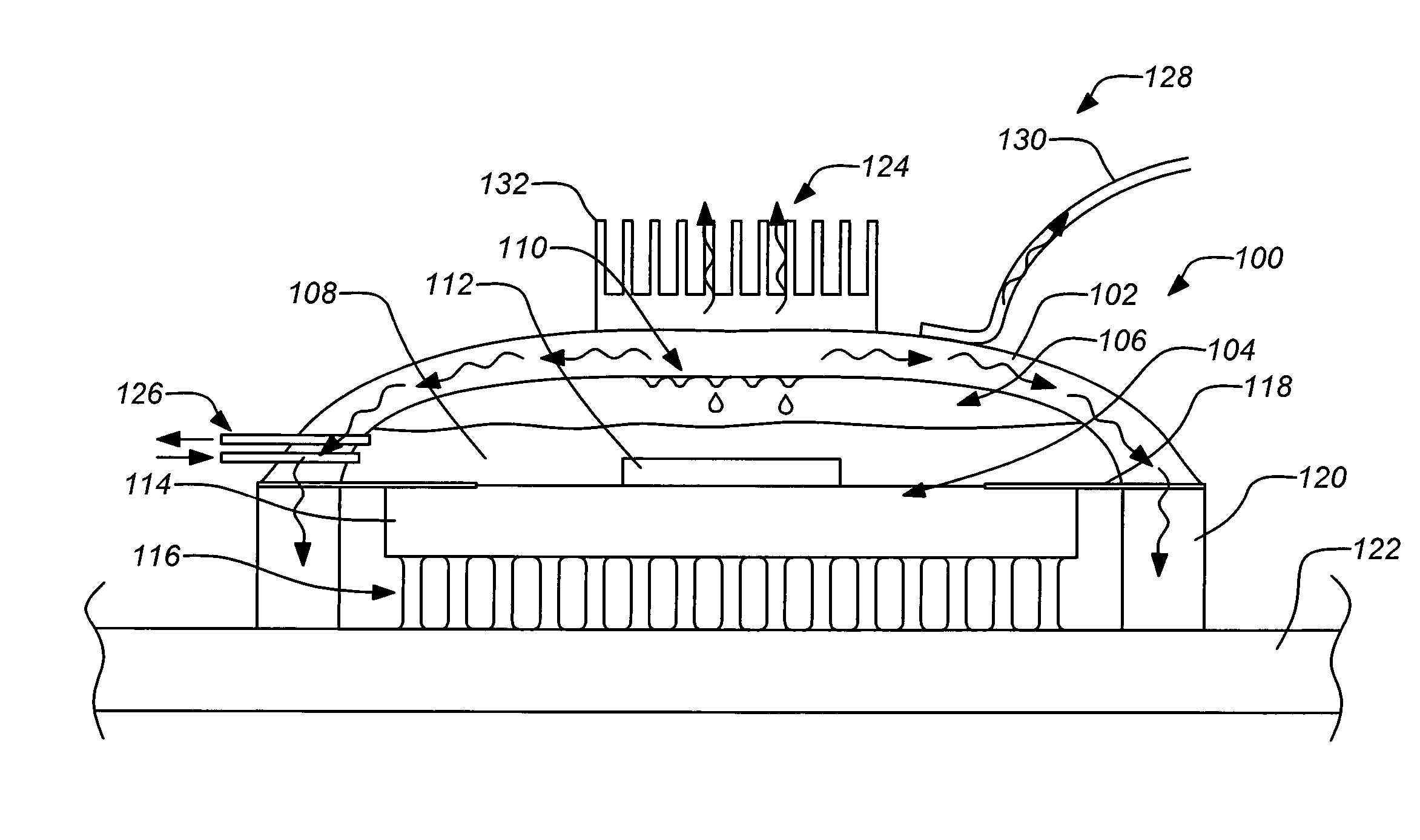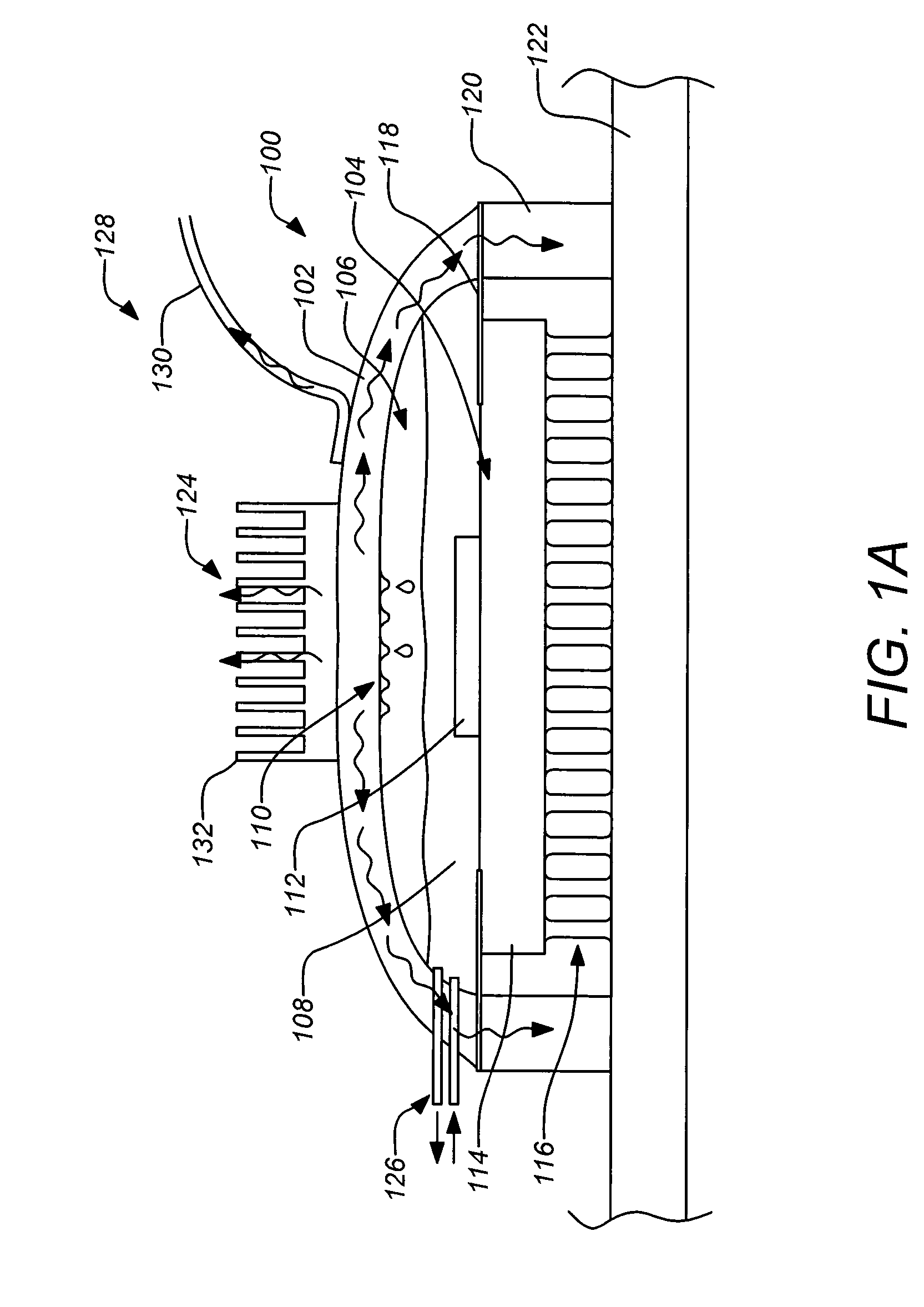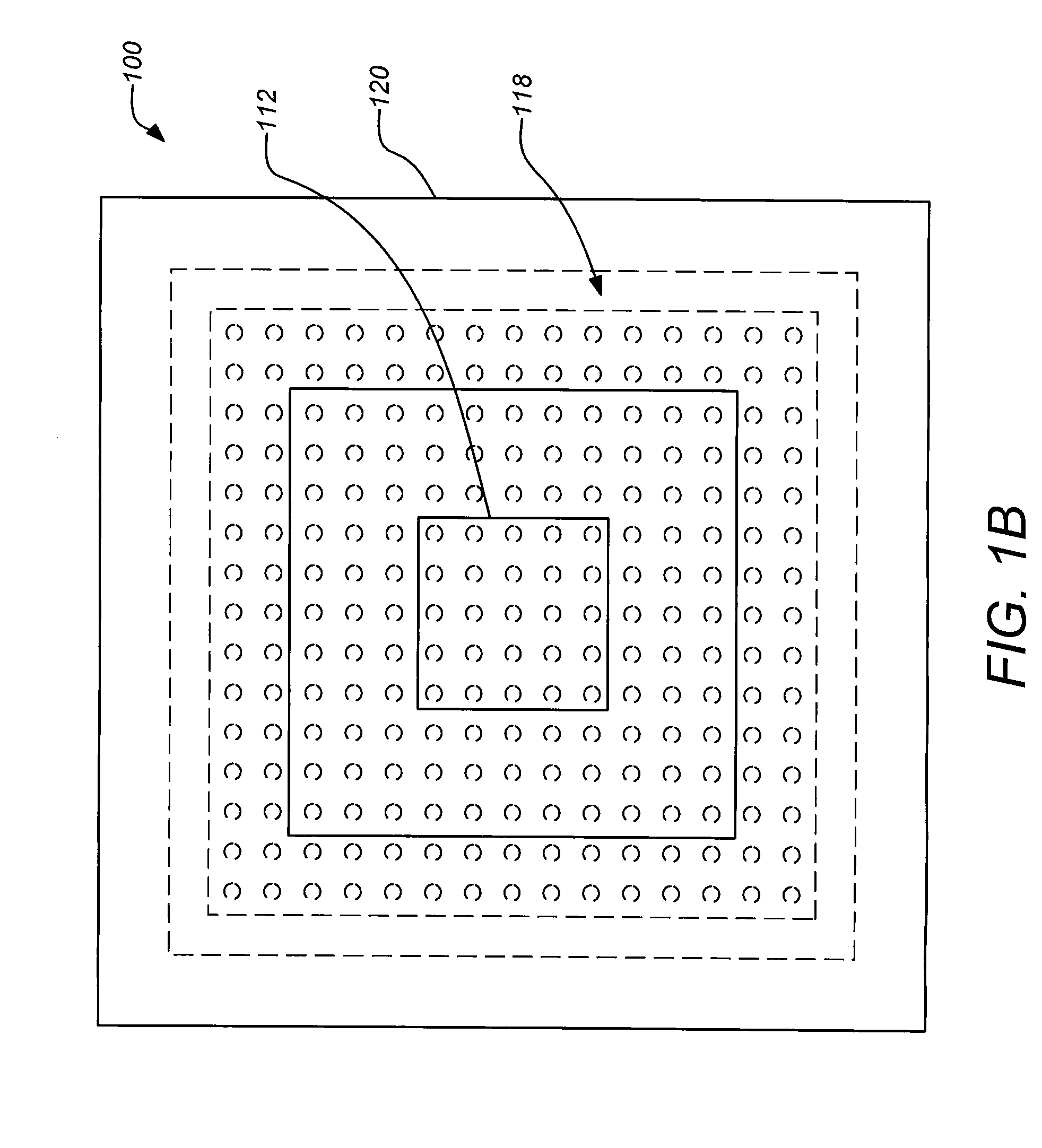Encapsulated multi-phase electronics heat sink
a multi-phase electronics and heat sink technology, applied in the field of encapsulated multi-phase electronics heat sinks and heat dissipation in electrical circuits, can solve the problems of multiple thermal choke points, the ability to effectively transfer excess heat to space has not kept pace with the demands of the higher-power electronics being employed, and none of the developed systems lend themselves to being easily integrated with an existing chip type or retrofitted to an existing circuit design. , to achieve the effect of facilitating fluid circulation and
- Summary
- Abstract
- Description
- Claims
- Application Information
AI Technical Summary
Benefits of technology
Problems solved by technology
Method used
Image
Examples
Embodiment Construction
[0024]1. Overview
[0025]As previously mentioned, embodiments of the invention are directed to an encapsulated inert non-conductive fluid used to transfer heat directly from an electrical circuit to an external heat-sink. The top of a chip die is enclosed with a metallic cover. The cover is sealed to an outer frame, which in turn is sealed to metallization on the top of the chip through a flexure, minimizing mechanical load into the chip. This forms a hermetic cavity in which the circuit of the chip resides. This cavity is filled with an inert non conductive fluid, which vaporizes when heated. Condensation occurs on the metal cover where the heat is transported into the outer frame for rejection into the spacecraft. Embodiments of the invention provide more efficient cooling than conventional heat-sinks. In addition, embodiments of the invention may be readily implemented with known chip types and retrofitted to existing circuits.
[0026]Embodiments of the invention generally require a ...
PUM
 Login to View More
Login to View More Abstract
Description
Claims
Application Information
 Login to View More
Login to View More - R&D
- Intellectual Property
- Life Sciences
- Materials
- Tech Scout
- Unparalleled Data Quality
- Higher Quality Content
- 60% Fewer Hallucinations
Browse by: Latest US Patents, China's latest patents, Technical Efficacy Thesaurus, Application Domain, Technology Topic, Popular Technical Reports.
© 2025 PatSnap. All rights reserved.Legal|Privacy policy|Modern Slavery Act Transparency Statement|Sitemap|About US| Contact US: help@patsnap.com



